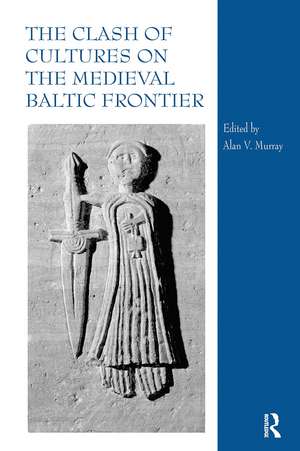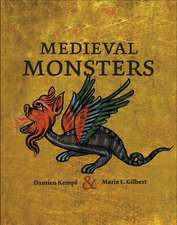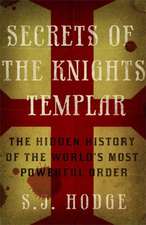The Clash of Cultures on the Medieval Baltic Frontier
Editat de Alan V. Murrayen Limba Engleză Paperback – 18 dec 2020
| Toate formatele și edițiile | Preț | Express |
|---|---|---|
| Paperback (1) | 393.74 lei 6-8 săpt. | |
| Taylor & Francis – 18 dec 2020 | 393.74 lei 6-8 săpt. | |
| Hardback (1) | 1069.71 lei 6-8 săpt. | |
| Taylor & Francis – 23 iul 2009 | 1069.71 lei 6-8 săpt. |
Preț: 393.74 lei
Nou
Puncte Express: 591
Preț estimativ în valută:
75.34€ • 79.08$ • 62.53£
75.34€ • 79.08$ • 62.53£
Carte tipărită la comandă
Livrare economică 10-24 aprilie
Preluare comenzi: 021 569.72.76
Specificații
ISBN-13: 9780367740153
ISBN-10: 036774015X
Pagini: 394
Dimensiuni: 156 x 234 x 21 mm
Greutate: 0.55 kg
Ediția:1
Editura: Taylor & Francis
Colecția Routledge
Locul publicării:Oxford, United Kingdom
ISBN-10: 036774015X
Pagini: 394
Dimensiuni: 156 x 234 x 21 mm
Greutate: 0.55 kg
Ediția:1
Editura: Taylor & Francis
Colecția Routledge
Locul publicării:Oxford, United Kingdom
Cuprins
Contents: Introduction, Alan V. Murray; Part I Culture and Identity: A new world into old words: the Eastern Baltic region and the cultural geography of medieval Europe, Marek Tamm; The Baltic crusades: a clash of 2 identities, Eva Eihmane; The emergence of Livonia: the transformations of the social and political structures in the territory of Latvia during the 12th and 13th centuries, Andris Šne; Sweden's conquest of Finland: a clash of cultures?, Philip Line. Part II Crusade and Mission: Pope Honorius III and mission and crusades in the Baltic region, Iben Fonnesberg-Schmidt; Violent victims? Surprising aspects of the just war theory in the Chronicle of Peter von Dusburg, Rasa Mazeika. Part III Converting Landscapes, Converting Peoples: Sacralization of the landscape: converting trees and measuring land in the Danish crusades against the Wends, Kurt Villads Jensen; How to convert a landscape: Henry of Livonia and the Chronicon Livoniae, Carsten Selch Jensen; Rural society and religious innovation: acceptance and rejection of Catholicism among the native inhabitants of medieval Livonia, Tiina Kala; Saints' cults in medieval Livonia, Anu Mänd. Part IV Catholicism and Orthodoxy: Sterile monsters? Russians and the Orthodox Church in the Chronicle of Henry of Livonia, Torben K. Nielsen; Archbishop Vasilii Kalika of Novgorod, the fortress of Orekhov and the defence of orthodoxy, Michael C. Paul; Orthodox churches in medieval Livonia, Anti Selart. Part V Warfare on the Baltic Frontier: Music and cultural conflict in the Christianization of Livonia, 1190-1290, Alan V. Murray; Crossbows or catapults? The identification of siege weaponry and techniques in the Chronicle of Henry of Livonia, Stephen Turnbull; The significance of the local Baltic peoples in the defence of Livonia (late 13th-16th centuries), Kaspars Klavinš; The Eastern Baltic lands in the age of the Crusades: a select bibliography of publications in English, Alan V. Murray; Index.
Notă biografică
Alan V. Murray is Senior Lecturer in Medieval Studies at the University of Leeds, UK.
Recenzii
’Taken together, the bibliography and sixteen articles make this a seminal work for both medieval Baltic and medieval frontier studies. The editor is to be commended for bringing this volume to publication.’ The Russian Review ’Alan Murray is to be congratulated and thanked for these essays... The editing of The Clash of Cultures on the Medieval Baltic Frontier is of such high quality that one could easily imagine that all the contributors were not only native English speakers, but had the increasingly rare gift of writing it well, too. For those with little patience for densely packed essays (and there is almost no other way to write for such a collection), Murray opens the book with a short but thorough summary of the contributions. All are of high quality...’ William Urban, Journal of Baltic Studies '... the volume is a valuable addition to the history of the medieval Baltic lands.' English Historical Review 'The editor is to be complimented for doing an extraordinarily good job in assuring the internal cohesion sometimes difficult to uphold in collective works. The articles taken together cover a broad range of topics serving as an excellent introduction through case-studies to the complex matter of the clash of cultures in the medieval Baltic frontier...' Crusades
Descriere
The conversion of the lands on the southern and eastern shores of the Baltic Sea by Germans, Danes and Swedes in the period from 1150 to 1400 represented the last great struggle between Christianity and paganism on the European continent, but for the indigenous peoples of Finland, Livonia, Prussia, Lithuania and Pomerania, it was also a period of w











